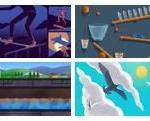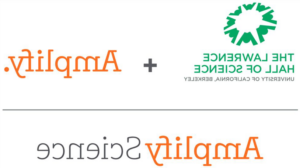Adopted 小学 and 中学 科学 Curriculum
Amplify 科学 in 小学 and 中学
The adopted 正规的棋牌平台排行榜 elementary and middle school science curriculum is Amplify 科学.
Amplify 科学 Instructional Model
Amplify 科学’s instructional model allows students to access their prior knowledge and to connect past learning experiences to the present.
Students have the opportunity to 问问题 and define problems about the natural and designed world, design investigations in which they collect and analyze trends and patterns in their data, engage in argument form evidence in both 写作 and through discourse with their peers, develop conceptual scientific models of physical phenomena, and to communicate their findings from their investigations.
Each unit is constructed as a compelling storyline which begins by engaging learners in a puzzling, relevant scientific phenomenon or engineering problem. 整个单位, students develop the scientific understanding needed to explain the phenomenon or design a solution through the 证据收集, and in this way they are engaged and challenged to “figure out,而不是简单的“了解”,重要 科学 概念. Amplify provides both online and offline instructional platforms with embedded flexibility for educators to adapt learning activities and differentiate instruction to accommodate students with diverse learning needs including students with IEPs, 能力强的学生, 和英语学习者.
To learn more about specific units in Amplify 科学 for elementary and middle school science, 点击下面的按钮.
评估
The Amplify 科学 curriculum was constructed to develop deep science knowledge and understanding, not merely touching on each science standard, but allowing for a depth of coverage in a variety of learning style for each. The program’s system of assessments provides an innovative means of supporting all students in developing this deep understanding. By aligning instruction to focused, 有意义的, and standards-based learning goals every student is achieving the level of understanding required by each unit.
评估机会包括:
Explore More 关于 Amplify 科学
Amplify 科学 is the product of a collaboration between the University of California, Berkeley’s Lawrence Hall of 科学 and the instructional technologists at Amplify, 由条例草案拨款 & 梅琳达·盖茨基金会, the Carnegie Corporation of New York, the Institute of Education 科学s, and the National 科学 Foundation.
Since their release in 2013, the Next Generation 科学 Standards (总会在) have raised the bar for science education. Moving the focus of instruction away from memorization and toward active engagement and critical thinking, the standards aim to teach students to think like scientists and engineers and grapple with core scientific principles, in addition to supporting deep learning of concepts that cut across science domains. Amplify 科学 has been designed from the ground up to meet the Next Generation 科学 Standards and respond to the instructional shifts called for by the National Research Council’s Framework for K-12 science education (2012).


